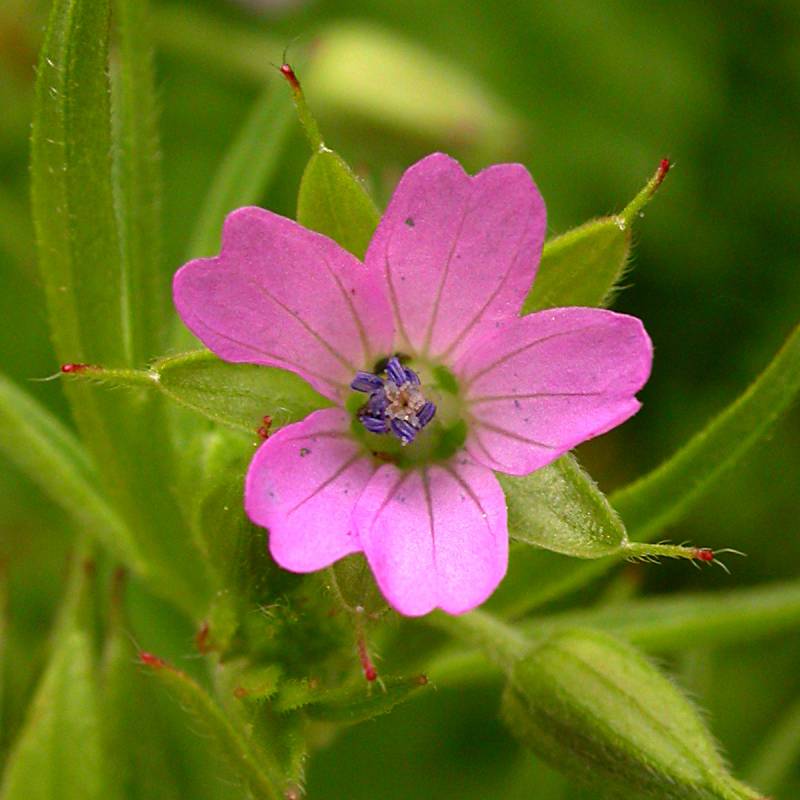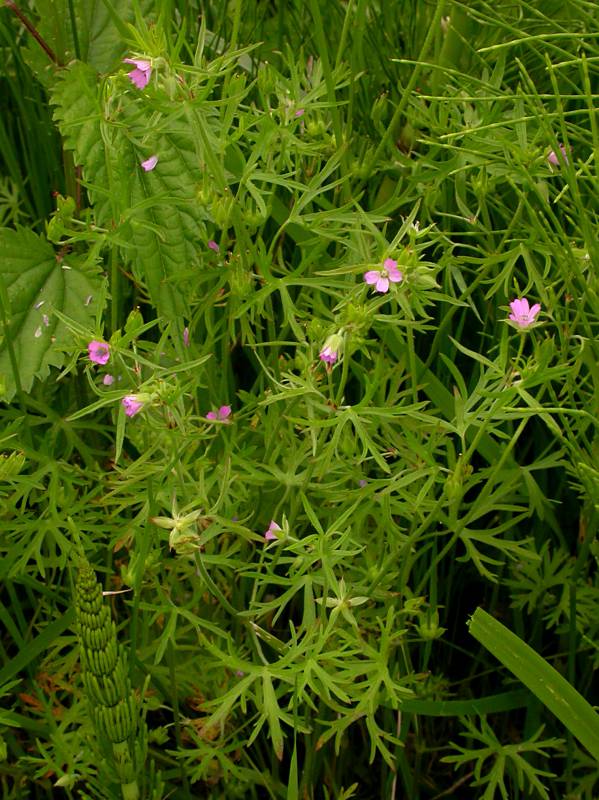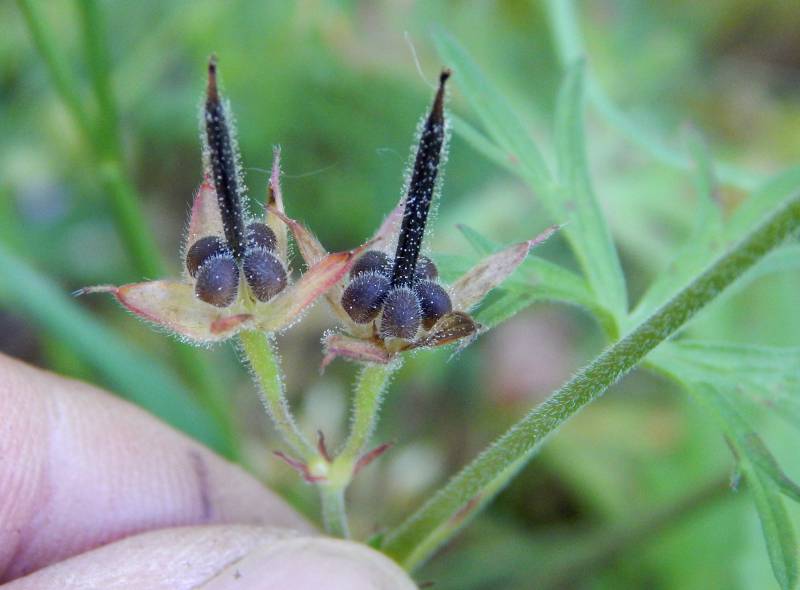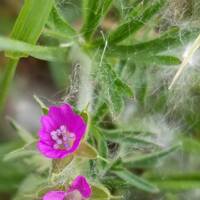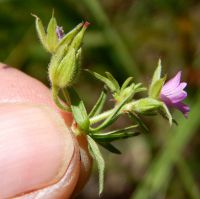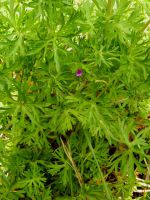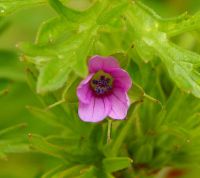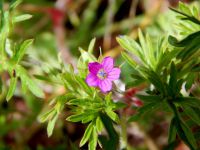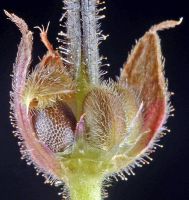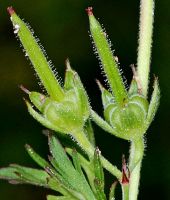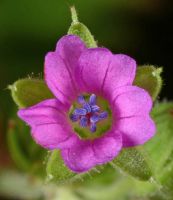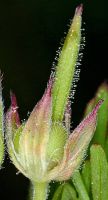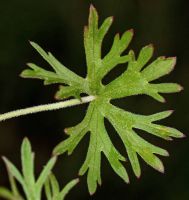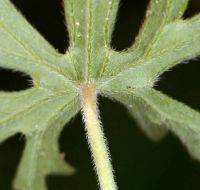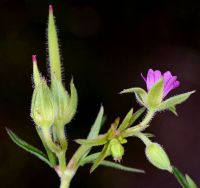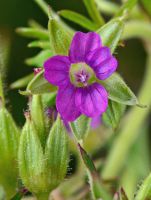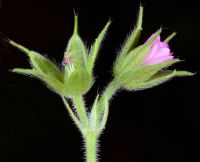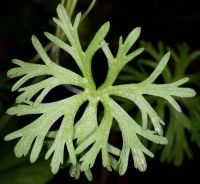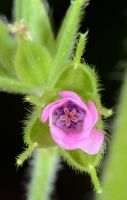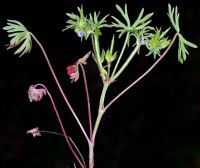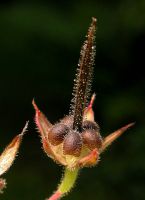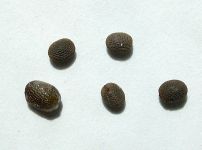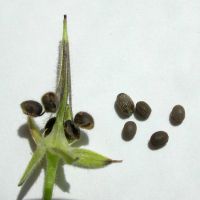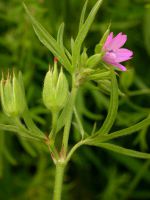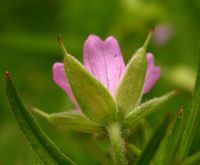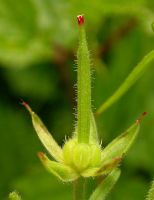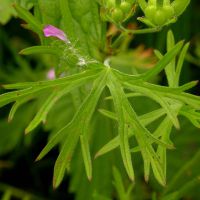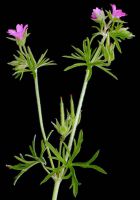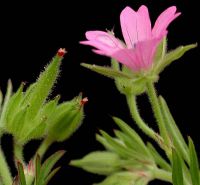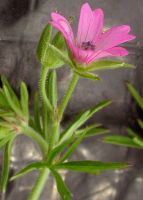Distribution: Occurring chiefly west of the Cascades crest in Washington; British Columbia to California and Nevada; widely distributed in central and eastern North America.
Habitat: Disturbed ground and waste places.
Flowers: March-July
Origin: Introduced from Europe
Growth Duration: Annual, Biennial
Conservation Status: Not of concern
Pollination: Bumblebees, bees, flies, wasps, beetles
Annual with stiff, spreading hairs, usually glandular above; stems 1.5-6 dm. long, spreading to erect.
Leaves long-petiolate, the blades cordate-rotund, 2-6 cm. broad, palmately parted nearly to the base, the 5-7 divisions from shallowly-lobed on the lower leaves to dissected into linear segments on the upper leaves.
Pedicels usually 2, about equal to the peduncle and calyx; sepals 5, 4-5 mm. long, bristle-tipped, elongating in fruit; petals 5, pink to purplish, with a shallow notch, equal to the sepals; fertile stamens 10, the filaments free; stylar column 1.5 cm. long with a beak 2-3 mm. long, stigmas up to 1mm.
Mericarps 5, 2.3-2.9 mm, not ridged, sparsely covered with bristly hairs, prong at base; seeds honey-combed.
Publication: Cent. Pl. I 21. 1755.
PNW Herbaria: Specimen records of Geranium dissectum in the Consortium of Pacific Northwest Herbaria database
WA Flora Checklist: Geranium dissectum checklist entry
OregonFlora: Geranium dissectum information
E-Flora BC: Geranium dissectum atlas page
CalPhotos: Geranium dissectum photos

